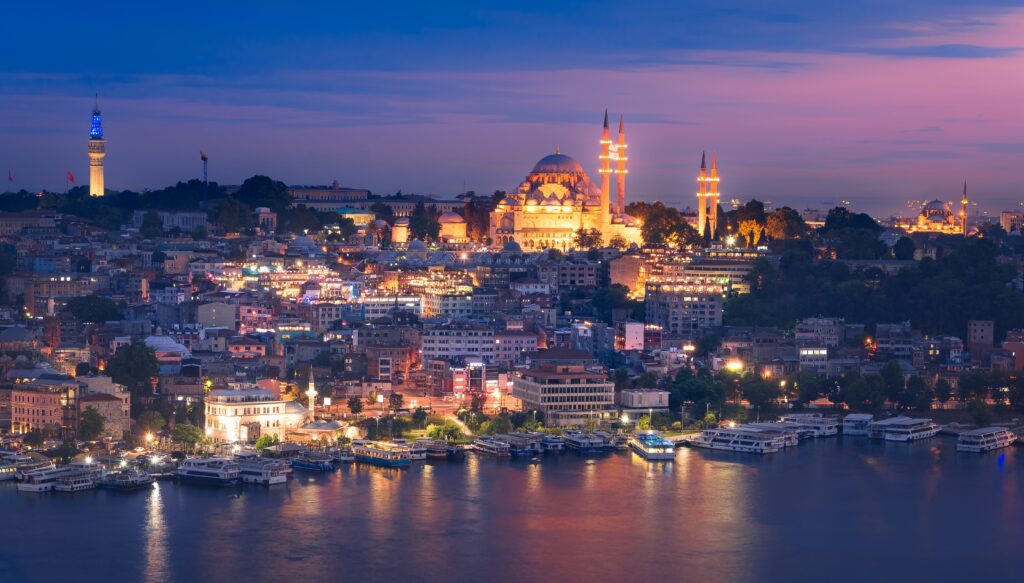
Özge Sengelen
ISTANBUL: Kotor stands as another pearl of the Adriatic, with its back to the mountains and sea at its feet; it’s not just a city but a host of the most enjoyable sea voyage
In my previous piece, I wrote about Budva, which has a very special place in my heart. Budva is a destination that I can talk endlessly about, and when one goes to Budva, one also wants to travel the entire length of the Adriatic riviera. So, I will now share with you my adventure in Kotor, another pearl of the Adriatic, setting out from Budva.
I was in Italy before the trip to Budva and Kotor. So, Italy was still fresh in my heart, with the smell of Venice in my mind as I walked around Kotor.
This city, which is an old Mediterranean port, was built by the Venetians. It is of Venetian architecture with its streets, castle walls and buildings. Here, the old city and the new city are separated from each other. They call the old city Stari Grad, as is the case in Budva. Stari Grad, that is, the old town, has three entrance gates: North, south and the sea gate.
I entered this magnificent city through the sea gate. Above the door, a phrase from former Yugoslavia leader Josip Broz Tito greets you, “Tude nejemo svoje nedamo,” meaning “What’s not ours we don’t want, what is ours we don’t give.”
While reading this saying, I thought I would understand the importance of its meaning better in my then-upcoming trip to Bosnia, as I listened to the sufferings of people and saw the bullet marks on the houses.
Evliya Çelebi, the 17th-century Ottoman explorer, while talking about this gate in his travel book, says that when they look toward Kotor from the villages, only a gate facing the sea is seen.
At the same time, when Evliya Çelebi came to this small town, he was not allowed in because of the plague epidemic in the town and he only saw the city from the outside.


Kotor, of course, is possible to finish visiting in a day with its castle, clock tower, cathedrals and squares, but as in every city, every step has its own story. So maybe Kotor deserves more than a day.
One of my favorite things about traveling is learning the stories of cities and its contribution to my personal development.
While traveling, you learn the stories of different countries, cities and people. Everywhere you go, your luggage comes back heavier.
In a way, you become cultured. Even your perspective starts to change. You see how big the world is and that it is indeed bigger than our own bubbles.
That’s where the change begins. Then your bubble starts to feel narrow, your problems get smaller. Because by traveling, in a way, you get away from problems and your effort to approach things that are beneficial to you increases. I think that by traveling, I direct my energies toward things that will do me good. This helps me enormously.
I thought about all this once again while visiting Budva and Kotor. Again, I came across wonderful landscapes. I again lost myself in an effort to immortalize every frame I saw as I turned my head here-and-fro. I was fascinated, and excited, and again I said, “Fortunately.” Fortunately, I have a passion for travel.

So, I should share some more details about Kotor, which got me so excited after Budva.
I reached Kotor after a 40-minute bus ride from Budva. I returned from Kotor to Budva by boat. There are Kotor tours that offer such alternatives in Budva. I preferred the land route going forward and on the way back, I preferred the sea journey.
When we got off the bus from Budva to Kotor, a giant cruise ship greeted us at the marina. Kotor, frequented by cruise ships, is also a natural harbor suitable for giant ships. The recess of the sea to the land stands like a harbor and the reflection of Montenegro’s famous dark green mountains gives you the feeling of a lake view.
When you come here, feeling like “I should only visit the old town and the must-see places in the city” and the idea that Kotor is all about these places may make you miss a lot. Because, in fact, Kotor is not just a name for the city but a name given to the region. Therefore, the shores in the Bay of Kotor, namely Tivat, Herceg Novi, Perast, and Our Lady Of The Rock Island, must also be seen when in Kotor.
Located at the southernmost tip of the Dalmatian Coast, Kotor is also on the UNESCO World Heritage List. This city, which also gave its name to the Bay of Kotor, is the only fjord in Europe after Norway.
This small medieval city has a fascinating view of the Adriatic Sea, especially when you go up to the castle, you are fascinated by this view. I don’t know if you would be intimidated if I said that it takes almost two hours to go up and down and it consists of 1,300 steps, but climbing the castle is really worth it for living these magical moments.
Kotor has such an atmosphere; You are trying to understand the style of this place as you go out from its narrow streets with stone houses to its squares. Rising in the Balkan breezes, Italian architecture has become a synthesis and gives you fairy-tale moments.
The boat ride from Kotor to Budva by crossing the canals and fjords was the most enjoyable part for me.
While enjoying the sun on the boat, I came across fascinating landscapes.
On your return journey with a boat tour, the boat takes breaks at some places. You can utilize these stops as swimming breaks or sightseeing breaks. As I mentioned above, this way you can not only visit Kotor as a city but also see many places in the Bay of Kotor.


One of the stops close to Perast in the Bay of Kotor was “Our Lady Of The Rock Island,” which they call “Gospa od Skrpjela” in their own language.
I think it’s the island of miracles. Because its stories are endless.
This artificial island has really intriguing stories. According to some of them, two brother fishermen, one of whom was disabled, found the icon of the Virgin Mary and Jesus on the rocks in the bay on July 22, 1452, and took the icon home.
When they woke up the next morning, the icon disappeared and the disabled fisherman’s injury was healed.
When the brothers sailed again and they saw that the icon was in the same place, they called this event a miracle.
Over time, sailors brought stones and rocks to form an island and protect the site.

They decided to build a church on the island they created with the stones they carried, as a gratitude to the Virgin Mary.
From that day on, this event was commemorated with a ceremony called “fasinada,” held every July 22 at sunset, and people would get on their boats and throw the stones they brought with them around the island.
You can listen to all this information and many interesting stories about the island, as told by the church guides, after you enter by paying a fee.
Another story is: After a certain time, the church became the church where sailors prayed before they set out on a voyage and their ships were blessed and as a gesture of gratitude when they returned safely.
In the church, an embroidery is exhibited which was made by a woman – whose name I can’t remember – in 30 years, using her own hair while waiting for her husband’s return from the sea.
She used her own hair as well as silver and gold threads while embroidering. There is brown in some parts of the embroidery and whiteness in others. Because while her hair was brown, it turned white over time.
The sad side of this story is that the lonely woman lost her vision over time and died before she could see her husband again.
There are also silver human limbs in the church. The sick or injured would donate them to the church in the hope of finding healing.
I think it stems from this point that the church is also called the “Church of the Healer Virgin Mary Who Healing.”


There is another island near Our Lady Of The Rock Island, but it is closed to visitors. With only a church and bell tower belonging to the monastery on the isle, Saint George Island is also called Sveti Djordje.
Herceg Novi is one of the places where the boat stops on the way back. Located in the Bay of Kotor, this historical small town is a center of attention, especially for tourists. This small town, which hosts tourists even outside of the summer season due to its spa and health centers, is worth seeing with its clean and beautiful beaches. It is possible to see Venetian influences in Herceg Novi, which, like Kotor, was under the rule of the Venetians for a long time.
Another stop is Tivat, located in the Bay of Kotor.

In addition to its sea, beaches and fascinating landscapes, Porto Montenegro, built on a former Yugoslavian naval facility, is one of the places that made Tivat popular. Tivat can attract your attention with its luxury hotels that have been rising recently.
Departing from Kotor by boat after I arrived by bus from Budva in the morning was perhaps the most accurate of my choices here. It would not be possible to cross this coastline, which has the distinction of being the largest fjord in the Mediterranean, by land twice.
I had to let myself be fascinated by the jagged mountains on the opposite shore of the fjord, the islands in the middle of the deep blue sea-like sheets, the winding roads embroidered like lace at the foot of the steep cliffs.
Although this destination is preferred during the summer period, I think it is a must-visit in all seasons.
You can experience the melancholy atmosphere of autumn and the most magical times of winter and bloom again in spring here.
Courtesy: Dailysabah
The post Gateway to the Dalmatian Coast: Kotor, another Adriatic pearl appeared first on The Frontier Post.








